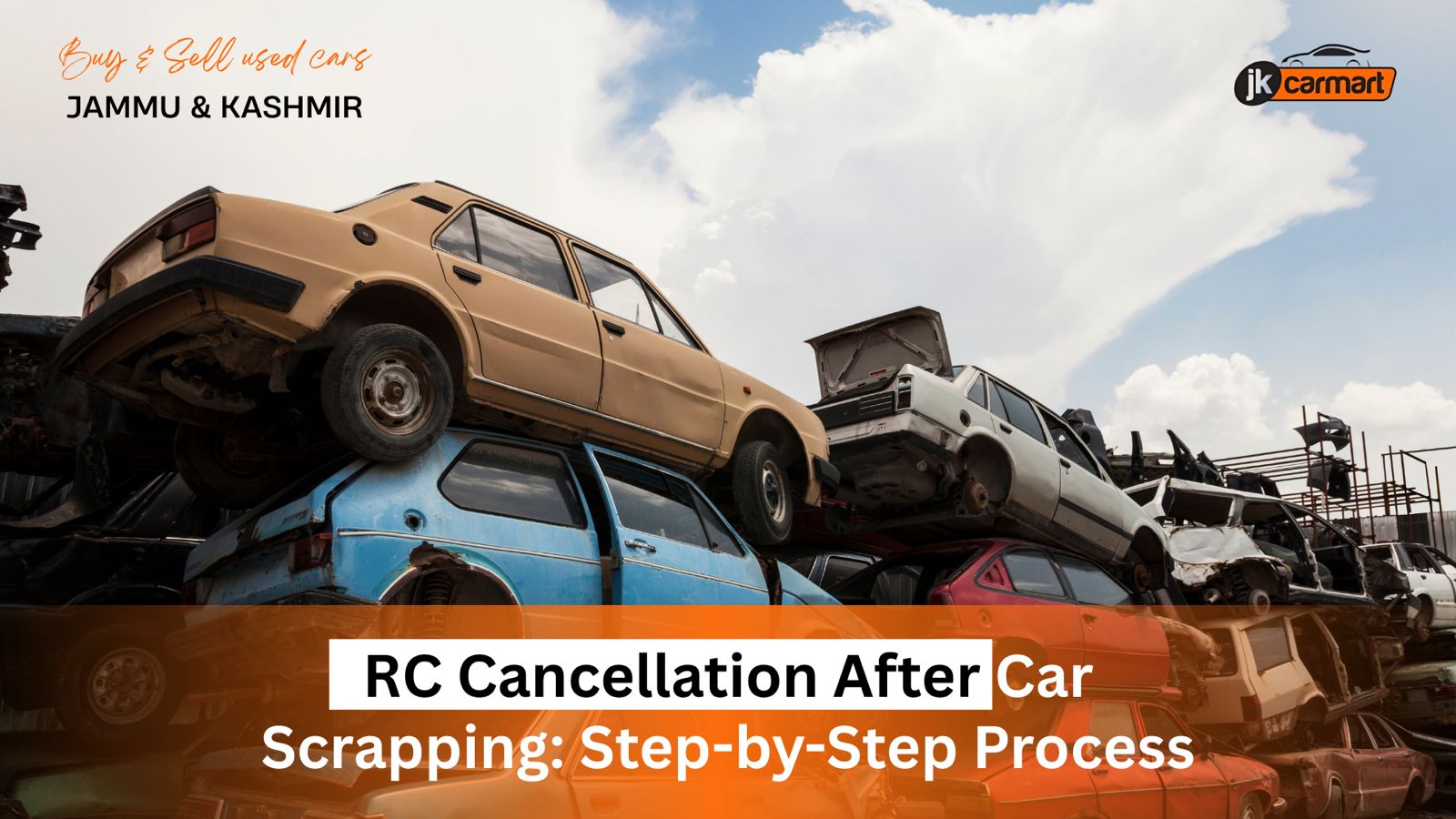Introduction
If you have an old car and are considering giving it away for car scrapping, there is one very important thing to remember. And it is RC Cancellation.
Make sure to cancel the RC before car scrapping, as just because the car is gone physically doesn’t mean it’s gone on paper. Unless you cancel the RC (Registration Certificate), you are still its legal owner. And that’s where the trouble starts.
A friend of mine once scrapped his decade-old hatchback and thought he was done. A year later, he got a challan in the mail for a traffic violation committed by “his” car, even though his actual car had already been dismantled. This should tell you how important RC cancellation really is.
RC (Registration Certificate) cancellation is a critical and legal step that vehicle owners must complete after car scrapping. This process protects owners from future legal liabilities and ensures proper deregistration from any government records.
Why RC Cancellation Actually Matters
RC is practically your ID card for the car. It verifies the vehicle and that its owner exists. When the car is scrapped, the body may be crushed and the parts may be sold off, but that identity card doesn’t just vanish. On paper, it’s still alive and tied to your name.
The law is clear about this. Under Section 55 of the Motor Vehicles Act, 1988, once your car is scrapped, you have 14 days to let the RTO know and get the registration cancelled.
If you don’t, government records will still show you as the owner of a car that doesn’t exist anymore. And that gap can cause trouble for you. It could be in the form of a challan or a tax notice.
Also Read: Top 5 Mistakes To Avoid When Buying a Pre-Owned Car
Why bother with RC cancellation?
Legal mess
If you don’t cancel your RC before the vehicle scrapping, it can cause many legal troubles for you. Let’s say, for example, you give away your car for scrapping, and someone pieces together a vehicle using your car’s details. Now this car ends up in an accident or gets tied to something criminal. But on paper, it’s still yours.
That means police calls and maybe even court visits, all for a car that’s nothing more than crushed metal. Cancelling the RC is basically your insurance against that kind of nightmare.
Money angle
Also, there is an advantage to doing this as well. Once the RC is cancelled, you can apply for a road tax refund, which is sometimes as much as 15–25%.
Plus, under the Vehicle Scrappage Policy 2025, you can enjoy reduced registration fees and even manufacturer discounts. It is sometimes ten or twenty thousand off your next purchase.
Mental peace
More than anything, it’s about tying off loose ends. There will be no random challans showing up months later. And also, no official letters about dues on a car that’s already been scrapped. It feels like putting a full stop at the end of a chapter.
What You’ll Need Ready
These are the documents you’ll need for your RC Cancellation:
- The original RC: If you’ve misplaced it, you’ll need to file a police complaint and get a duplicate.
- Certificate of Vehicle Scrapping (CVS) from an authorised recycling facility.
- Form 26: It is easily downloadable from the Parivahan site.
That’s the core documents. Alongside, you’ll also need these:
- ID proof (Aadhaar, PAN, passport, or license).
- Address proof (electricity bill, ration card, whatever works).
- An affidavit saying you scrapped the car willingly and there that it isn’t tied up in loans or disputes.
- Bank NOC if it was financed.
- Insurance certificate, if it’s still lying around.
Step-by-Step Process of RC Cancellation
Step 1: First things first- Scrap it properly
Don’t just drop your car at some random scrap yard. My advice will be to take it to a government-approved Registered Vehicle Scrapping Facility, often called an RVSF. These places know the whole process and how to do it. They dismantle cars properly and recycle the parts safely by following the environmental rules.
Once they’re done, they’ll give you a Certificate of Vehicle Scrapping. And, in most cases, they’ll even upload it straight to the Vahan portal. This way, your car is off the books before you’ve even left the facility.
Step 2: Get your documents together
Gather your RC, scrapping certificate, Form 26, ID, and address proof together. Make neat photocopies and self-attest them, but keep the originals handy because they’ll want to verify everything.
It might feel a little tedious, but having a complete, organised bundle can save you multiple trips to the RTO. I’ve seen people turn up with one missing piece, and it just drags the process for weeks.
Step 3: Visit the RTO
In this next step, you’ll have to visit the RTO where your car was originally registered. Now you will submit the application and pay a small cancellation fee of a few hundred rupees.
Step 4: The Verification Part
This step will be done by the people in the RTO. They will verify all your car details here. They also search through police records and ensure that there are no pending cases against your vehicle.
Step 5: Get your proof and closure
RTO officially cancels the RC in the Vahan system after all the checks are done. And now you will receive an acknowledgement slip or RC cancellation certificate.
This slip is proof that your old car now legally does not exist and also that you’re no longer tied to it. You should keep this safe, as this is the document that can save you from any future legal or financial trouble tied to that car.
Can You Do It Online in J&K?
Yes, but not completely.
The Vahan portal lets you upload documents and check your RC cancellation status. The process is not fully digitalised in Jammu & Kashmir at the moment, though. A few states have done the whole process online, but J&K still needs you to go to the RTO to get it verified after submitting the application.
- To begin, visit the Parivahan Sewa portal and log in.
- Select “Vehicle Related Services,” choose Jammu & Kashmir as your state, and proceed with the RC cancellation application.
- After uploading the documents and paying the fee, you will then need to go to your local RTO for verification by appointment.
So, while you can start the process online, you should expect a swift in-person visit for finalising the cancellation.
Also Read: Why Used Car Values Are Rising in 2025 – And What It Means For You
Conclusion
Cancelling your RC after car scrapping is kind of one of those small but important things you can’t skip. You’ve already said goodbye to the car itself, right? Engine’s gone, metal’s recycled… but on paper, it’s still yours until the RTO gets the memo. If you miss that, you might get a random notice or even a fine, and trust me, no one wants that surprise.
The good thing is, with just filling a few forms, or maybe a quick trip to the RTO will get it done. Keep that cancellation slip safe. It’s proof that the car is officially gone and you’re off the hook.





